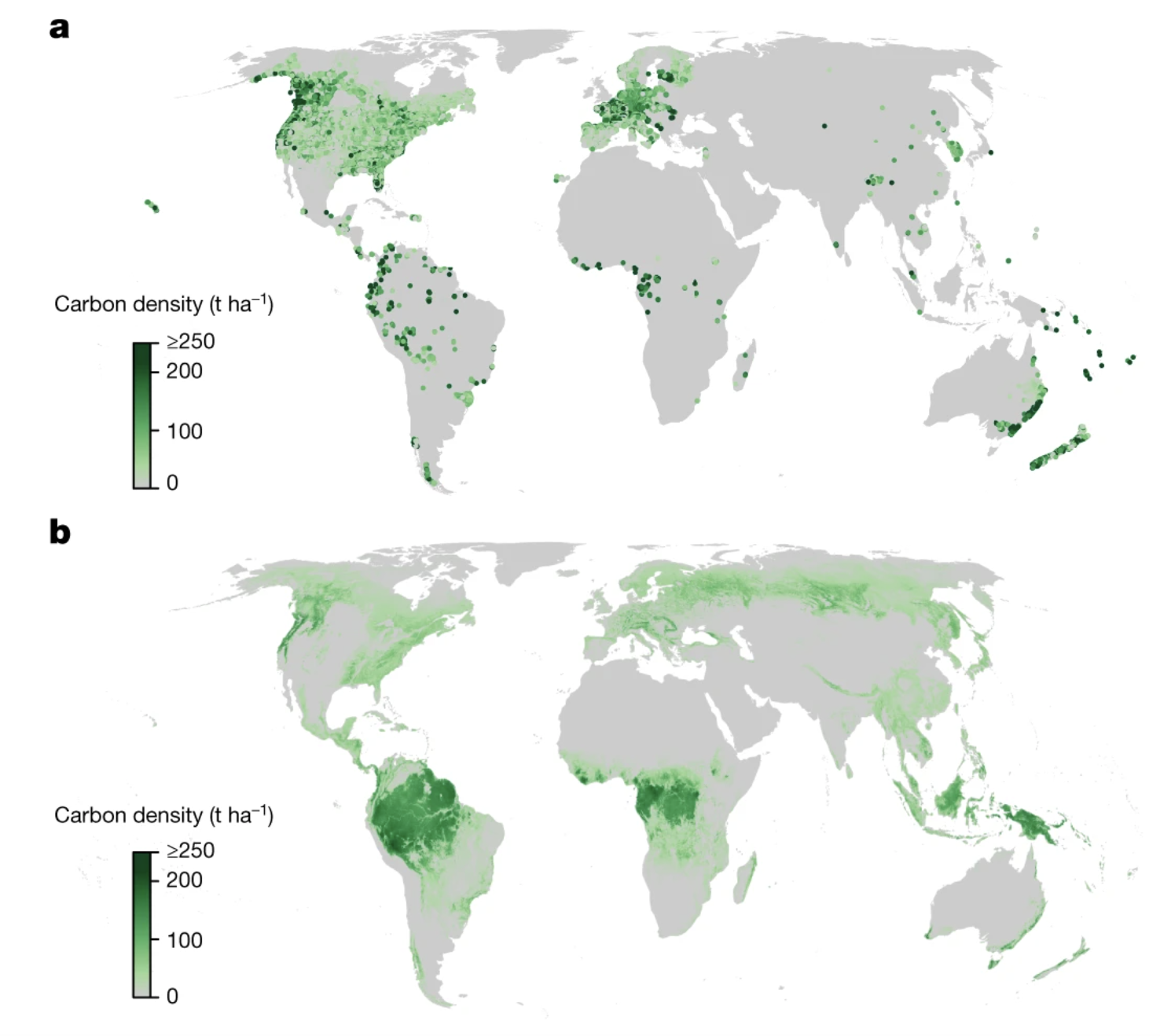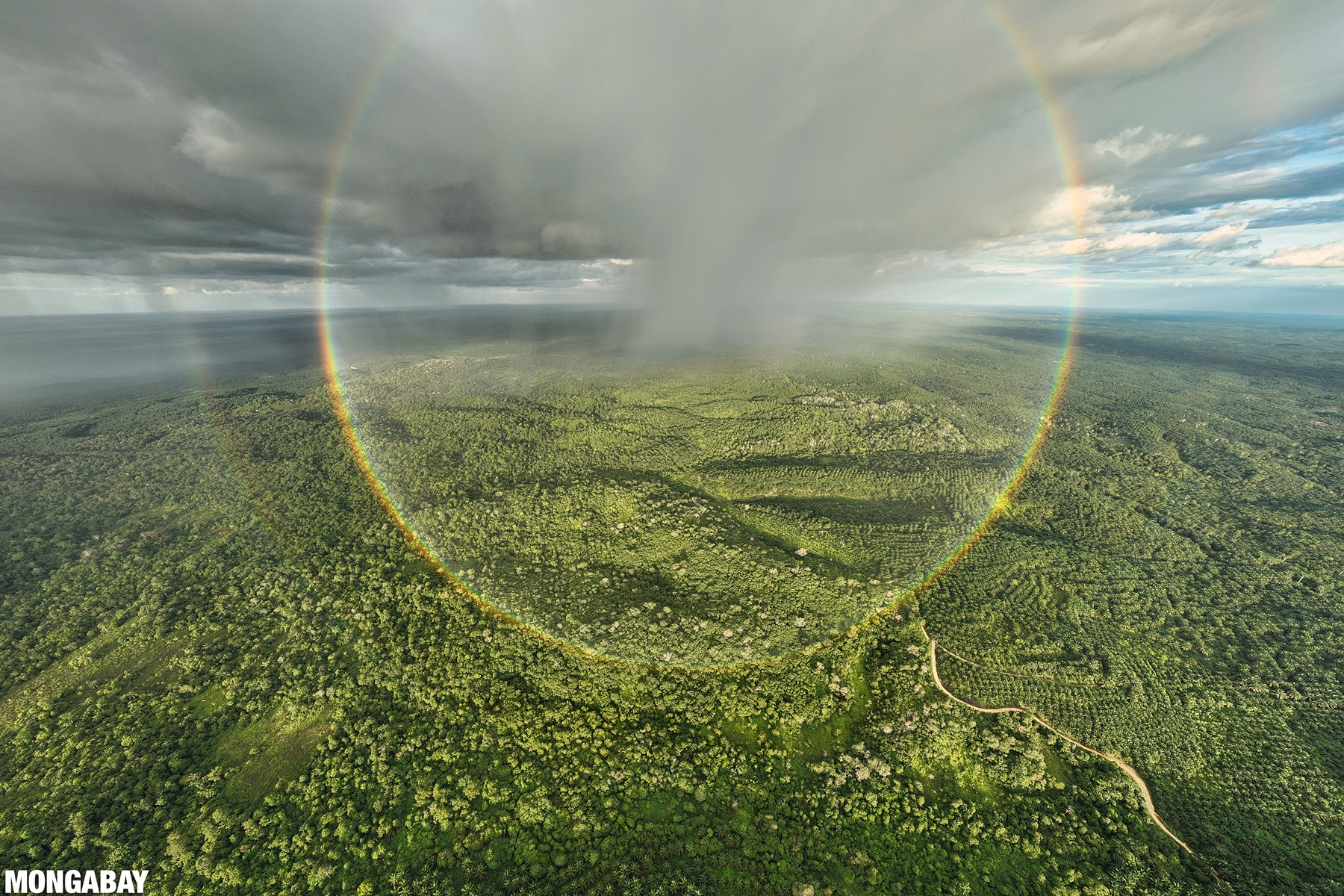Intact forests play a vital role in tackling the climate crisis by absorbing and storing carbon. Still, there’s uncertainty around their true carbon-capturing potential, and previous efforts to quantify it have sparked controversy.
- A new study finds forests could potentially store 226 billion metric tons of carbon if protected and restored, or about one-third of excess emissions since industrialization.
- Nearly two-thirds of this potential lies in conserving and letting existing forests mature.
- The authors say that restoring deforested areas through community-driven approaches such as agroforestry and payments for ecosystem services is essential.
- Planting trees can’t replace cutting fossil fuel emissions, as climate change threatens forests’ carbon uptake.
Intact forests play a vital role in tackling the climate crisis by absorbing and storing carbon. Still, there’s uncertainty around their true carbon-capturing potential, and previous efforts to quantify it have sparked controversy. A study published this week in Nature provides what its authors say is an updated estimate of the “huge” potential of forests.
The research, led by the Crowther Lab at ETH Zürich and co-authored by more than 200 scientists across the globe, estimated that protecting and restoring forests could capture 226 billion metric tons (GT) of carbon from the atmosphere. This equals around one-third of excess emissions since industrialization began.
The study found that roughly 61% of this potential is attainable by protecting existing forests and allowing them to reach old-growth maturity. The remainder requires restoring degraded and deforested areas and connecting forest fragments in key areas.
However, senior author Tom Crowther, a professor of ecology at ETH Zürich, cautioned against misusing the findings to avoid reducing fossil fuel use. He also stressed that tree planting alone can’t substitute for cutting emissions. If emissions keep rising, droughts, fires and warming will increasingly threaten forests.
“There’s no choice between emissions cuts and nature protection. Both are utterly essential,” he said. “If we keep emitting while planting trees, those trees will still die.”

This study follows a controversial 2019 paper published in Science in which Crowther and colleagues said 0.9 billion hectares (2.2 billion acres) of reforested land — an area nearly the size of Brazil — could support more than 200 GT of additional carbon uptake through forest restoration, or one-third of carbon emissions.
Critics argued this amount of land was not available to reforest and that such claims emboldened greenwashing efforts in which companies and governments use tree-planting projects to excuse further carbon emissions. The paper was cited as inspiration for the World Economic Forum’s (WEF) One Trillion Trees Initiative, launched by Salesforce billionaire Marc Benioff.
“I’ve never in my life said we should plant a trillion trees,” Crowther told The Guardian in 2021. “It gives the impression of plantations everywhere.” When spreading the word about that study, he added, “We messed up the communications so badly.”
With this new research, Crowther told Mongabay, “We are collectively saying forests offer incredible potential, but not for greenwashing or offsetting guilt, and not without cutting emissions.”
The new analysis addresses past uncertainties using extensive ground and satellite data. First, they compiled ground-sourced data from more than a million forest plots containing tree measurements. Using this plot data and environmental factors like climate, they built statistical models to estimate the capacity of natural aboveground forests to store carbon. Second, they used existing satellite-based maps of global forest biomass and environmental factors to build similar statistical models of natural carbon storage potential.
They built models using both ground and satellite data, then used these to calculate the potential carbon storage in the aboveground biomass of trees if forests grew naturally without human interference. Then, estimates of below-ground tree carbon, dead wood, leaf litter, and soil carbon were added to approximate the total ecosystem carbon potential.
Crowther said he was astonished by the consistency between ground and satellite-based models globally. “We saw only 12% difference across approaches, which is amazing.”

A leading critic of the 2019 study, Joseph Veldman, an ecologist at Texas A&M University, told Reuters this new study “still exaggerates how much carbon could be sequestered” and the amount of land available to reforest. Simon Lewis, another former critic and professor of global change science at University College London, told The Guardian, the new estimate was “much more reasonable and conservative.”
Crowther said he was surprised that so much carbon storage potential could be achieved just by protecting standing forests and allowing them to mature into old-growth ecosystems.
“This research underlines how our first priority is to keep the remaining old-growth forests standing,” said Oliver Phillips, professor and chair in tropical ecology at the University of Leeds.
“Conserving forests, ending deforestation and empowering people who live in association with those forests has the power to capture 61% of our potential,” Crowther told The Guardian. “That’s huge. It’s potentially reframing forest conservation. [Protecting forests is] no longer avoided emissions, it’s massive carbon drawdown, too.”

The study called for reframing and redefining restoration as community-led stewardship rather than emissions-offset tree-planting. Restoring forests includes natural regeneration, rewilding and tree planting. “But it only really works when it’s driven by the local community,” Crowther said. “When external entities claim land and plant trees at scale, that is often, if not always, greenwashing.”
According to the study, biodiversity underlies about half of forest productivity worldwide, so restoring a diverse natural forest (versus monoculture plantations) is key to maximizing carbon storage. And for keeping carbon in the ground, protecting grasslands, peatlands, and wetlands is equally vital as protecting forests, co-author Constantin Zohner said in a statement.
Thousands of projects are needed to restore global forests, and there are already many exemplary projects and approaches underway. One approach is agroforestry, an ancient agricultural system, that combines trees with crops in a system that produces food, supports biodiversity, and builds soil horizons and water tables while sequestering carbon from the atmosphere.

In northwestern Ecuador, for example, the NGO Third Millennium Alliance pays local farmers to transition from unsustainable agricultural practices such as cattle grazing to shade-grown cacao cultivation, while providing access to premium markets to sell their cacao.
Costa Rica’s payments for ecosystem services program is another example where paying farmers to keep forests intact seems to be working.
“Global restoration does not mean planting as many trees as possible. It means finding political and financial mechanisms that drive equitable development so that millions of local people are empowered by nature,” Crowther said.
By some estimates, the number of trees worldwide has been reduced by nearly 50% since the dawn of agriculture roughly 12,000 years ago, and more than 15 billion trees are still felled every year. International agreements have been created to protect forests and restore ecosystems, including the U.N. Decade on Ecosystem Restoration (whose advisory board Crowther co-chairs), the Kunming-Montreal Global Biodiversity Framework, and the Glasgow Leaders’ Declaration on Forests and Land Use.
Crowther and colleagues say they hope the information in this study can help set targets for forest protection and restoration worldwide and “help inform policies that channel financial flows towards local communities and indigenous peoples who are promoting biodiversity around the world.”
An important step in guiding these efforts is understanding how much carbon existing forests store and how much carbon could be recaptured if healthy forests recover.
“It seems like such an impossibly overwhelming idea to restore all forests,” Crowther said, “until you see it working and see people gain economic security by keeping the forest standing.”
Banner image: Rainforest and an oil palm plantation in Sumatra. Photo credit: Rhett A. Butler
"Forests hold massive carbon storage potential — if we cut emissions " by Liz Kimbrough is licensed under CC BY-NC-ND 4.0

